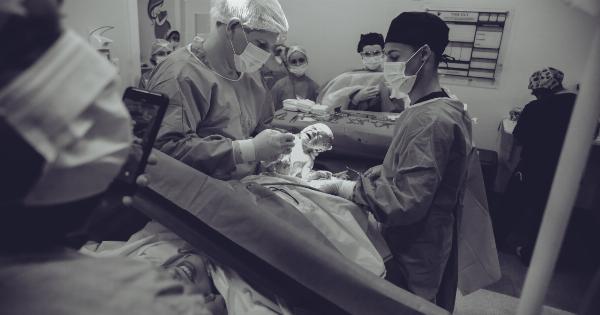Caesarean section (C-section) is a major surgical procedure that involves delivering a baby through incisions made in the mother’s abdominal wall and uterus. In recent years, the number of C-sections performed globally has been rising steadily.
According to the World Health Organization (WHO), over 21% of all births worldwide are delivered via C-section. While C-section can be a life-saving procedure in certain cases, the risks associated with it are many, including prolonged recovery, infections, blood loss, and complications in subsequent pregnancies.
Additionally, studies suggest that babies born via C-section may be at an increased risk of developing long-term health problems. In this article, we explore the link between Caesarean birth and long-term health outcomes.
Risks and Benefits of Caesarean Section
Caesarean section is often recommended when vaginal delivery is deemed unsafe for either the mother or the baby.
Maternal health conditions such as high blood pressure, placenta previa, or an active genital herpes infection can increase the risks of vaginal delivery, and a C-section may be necessary. C-sections can also be conducted in cases where the baby is in distress, the mother has a multiple pregnancy, or when vaginal delivery poses a risk to the baby’s health.
C-sections are generally considered safe when carried out under optimal conditions. However, they are major surgical procedures that carry significant risks.
Infection, blood loss, and adverse reactions to anesthesia are some potential complications of C-section. Women who undergo a C-section also have a longer recovery period than those who deliver vaginally, with an increased risk of post-surgical complications such as fever, pain, and wound rupture.
Caesarean Birth and Long-Term Health Outcomes
Babies born via C-section may be at an increased risk of developing long-term health problems compared to those born vaginally.
Studies suggest that C-section birth alters the infant’s microbiome, which is the collection of microorganisms that live on and in our bodies. The gut microbiome, in particular, plays a crucial role in immune system development, digestion, and metabolism. Disruption of the microbiome during birth may increase the risk of autoimmune disorders, allergies, and obesity in children.
Babies born via C-section may also be at an increased risk of respiratory problems, such as asthma, due to alterations in lung development during birth.
A study of over 10,000 children found that those born via C-section had a 21% higher risk of asthma compared to those born vaginally. Additionally, C-section birth has been linked to an increased risk of type 1 diabetes, celiac disease, and other immune-related disorders.
Reducing the Risks of Caesarean Section
While C-sections can be life-saving in certain situations, they should only be carried out when necessary.
In cases where a C-section is not medically necessary, it is important for women to be informed of the risks and benefits associated with the procedure and to be given the opportunity to choose the method of delivery that they feel is best for them and their baby.
One way to reduce the risks of C-section is to promote vaginal birth after cesarean (VBAC) for women who have had a previous C-section. VBAC is a safe and viable option for most women who have had a previous C-section.
However, many hospitals and healthcare providers are reluctant to offer VBAC due to concerns about the risks of uterine rupture during labor. VBAC should be offered as an option to women who meet the criteria for a safe vaginal delivery after a C-section.
Conclusion
Caesarean section is a major surgical procedure that carries significant risks and potential long-term health repercussions for both the mother and the baby.
While C-section can be a life-saving procedure in certain cases, it should only be carried out when medically necessary. Women should be informed of the risks and benefits associated with C-section and given the opportunity to choose the method of delivery that they feel is best for them and their baby.































